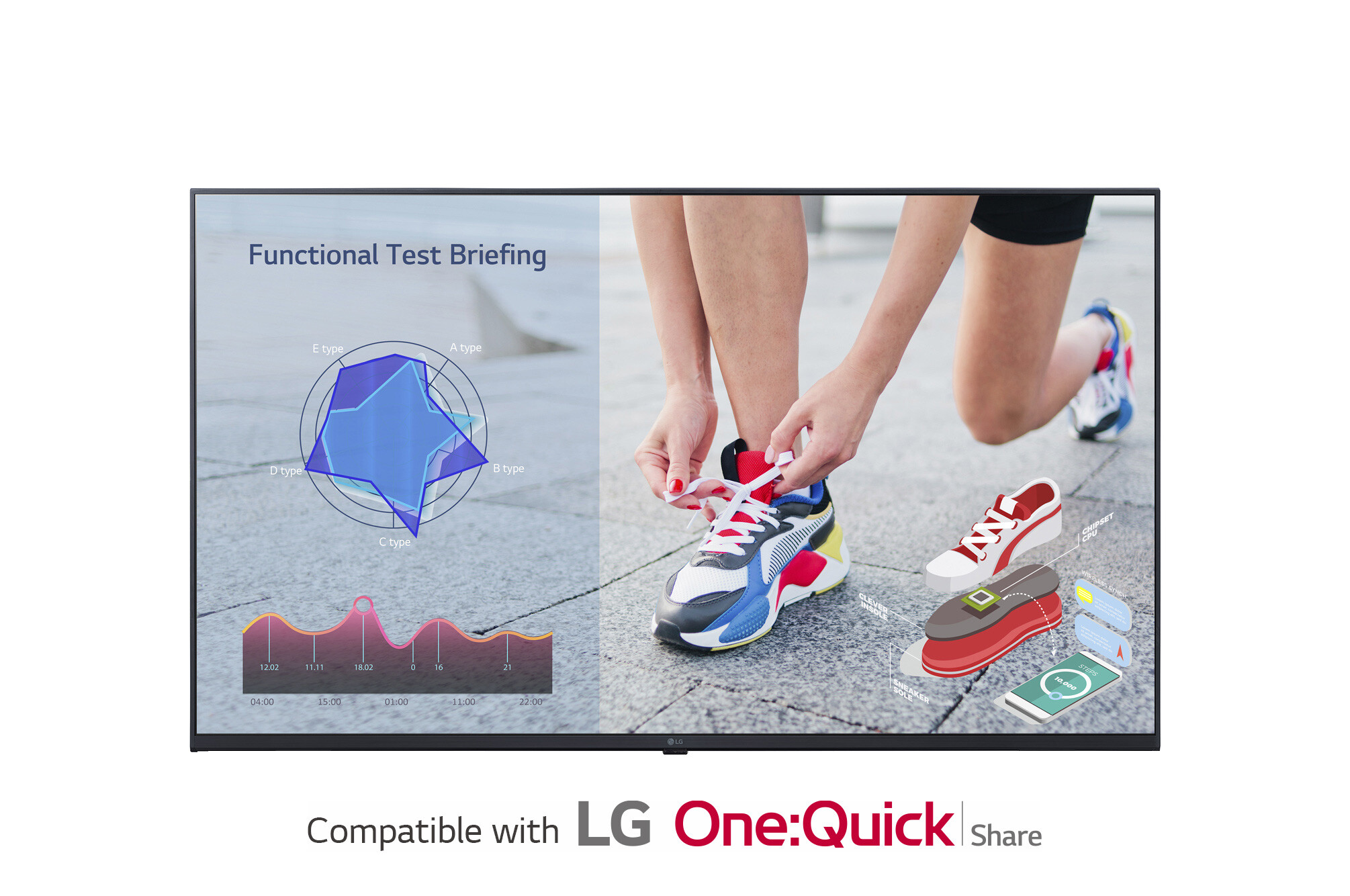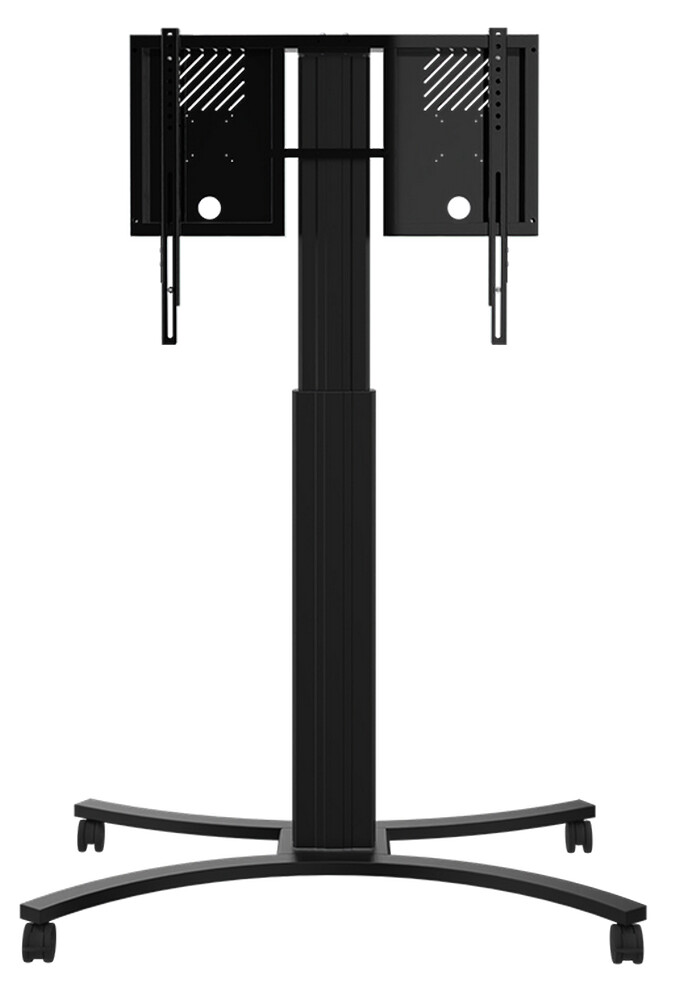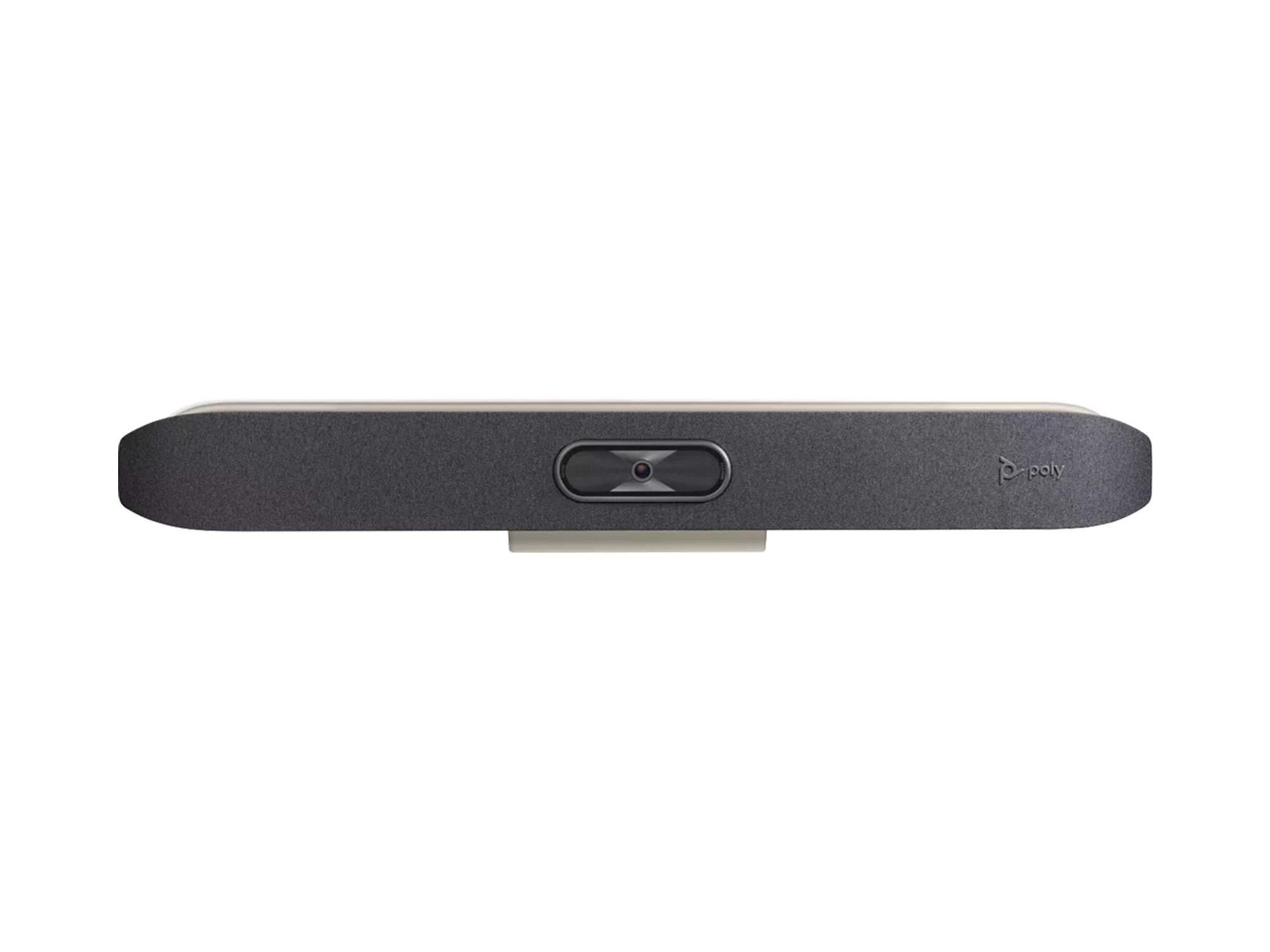







































£1,917.49*
- Resolution 3840 x 2160 4K UHD
- Max. Brightness 400 cd/m²
- Panel type IPS
- Contrast Ratio 1.3 :1


Frequently purchased together
Product information
Key Features
- Brightness(Typ.) : 330 nits
- Resolution : ULTRA HD (3,840 x 2,160)
- webOS-based High Performance
- Built-in Speaker
- Compatible with LG's One:Quick Share
- Compatible with AV Control Systems
LG’s Wireless Screen Sharing Solution, LG One:Quick Share
LG One:Quick Share is a wireless screen sharing solution available through the UL3J series, USB transmission unit, and its app. You can simply share personal PC screen to the display with it's USB dongle button and embedded Wi-Fi, and can adjust the basic setting values (volume, picture mode, auto bright, etc.) of the connected display without a remote control. Also, the Office Meeting Mode helps you to display the agenda, note before the meeting starts.
Remote Monitoring and Control
This web-based monitoring solution is user-friendly and allows the user to be at ease. It enables the user to have full access anywhere at anytime from their mobile phone & PC under network-accessible environment while having access to both current and past data. It allows the user to monitor the unit, make adjustments and control the unit remotely in real time
Compatible with AV Control Systems
The UL3J series supports Crestron Connected® for high compatibility with professional AV controls to achieve seamless integration and automated control, boosting business management efficiency.
Compatible with Video Conference System
For effective visual meeting, the UL3J series supports its compatibility with Cisco solutions that offers powerful and integrated control for a smarter video conference.
Easy Menu Setup for Vertical Needs
UL3J series increases users' convenience by organizing frequently used menus by industry.
Wireless Access Point
UL3J series operates as a virtual router which can be an wireless access point for mobile devices.
Superb Picture Quality with Ultra HD Resolution
With the resolution of UHD, it makes the color and details of the contents vivid and realistic. In addition, the wide viewing angle applied with an IPS panel, provides clear contents.
Sophisticated Slim Design
This series is thin in bezel size and thickness, which saves space and enables easy installation. In addition, it increases the immersive experience from the screen and provides a sophisticated design, improving the décor of the space where the product is installed.
High Performance with LG webOS 6.0
LG webOS 6.0, upgraded in SoC and web engine, is available on UL3J series for a smooth execution of several tasks. LG webOS smart signage platform enhances user convenience with intuitive GUI.
Technical data
| Name | LG 86UL3J-B 86" Display |
|---|---|
| Article number | 1000021001 |
| GTIN/EAN | 8806091356673 |
| Manufacturer SKU | 86UL3J-B |
| Model name | 86UL3J-B |
| Brand | LG |
| Product Type | Non-Touch Display |
| Product Series | LG UL3J Series |
| Technology | LED |
| Panel type | IPS |
| backlight | LED |
| Resolution | 3840 x 2160 4K UHD |
| Diagonal | 86" |
| Aspect Ratio | 16:9 |
| Viewing angle - Horizontal | 178° |
| Viewing angle - Vertical | 178° |
| Contrast Ratio | 1.3 :1 |
| Screen finish | Matt |
| Max. Brightness | 400 cd/m² |
| run-time | 16/7 |
| Response time | 8ms |
| Refresh Rate | 60Hz |
| Support - VESA | 600 x 400 |
| Frame width | 15.9 mm |
| Inputs | 1x RS232 , 2x USB-A , 3x HDMI |
| wireless technology | WiFi |
| Product width | 192.7 cm |
| Product height | 110.4 cm |
| Product depth | 5.99 cm |
| Weight | 45.2 kg |
| Colour | Black |
| EEK Spectrum | A to G |
| Delivery contents | Batteries , Power cable , Quick user guide , Remote control |
| Condition | New |
| Warranty | 24 Month |
| Warranty type | Bringin service Service and support information |
Product safety
| Person responsible for the EU |
|---|
| LG Electronics Deutschland GmbH |
| Alfred-Herrhausen-Allee 3-5 |
| 65760 Eschborn |
| Germany |
| info@lge.de |



















